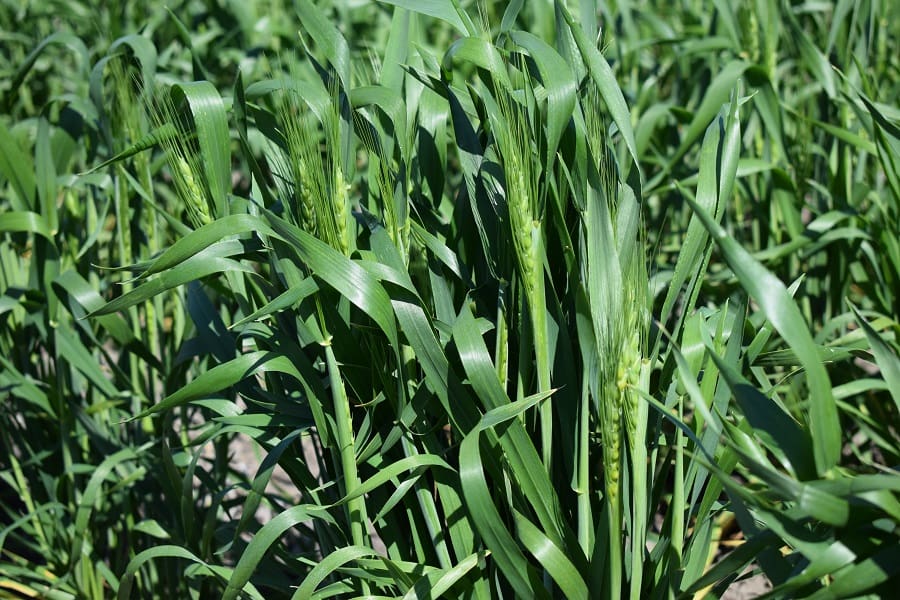
INSUFFICIENT nitrogen is one of the key reasons behind wheat crops not reaching their full yield potential, but a multi-layered approach is required to increase yields and reduce the size of the ‘gap’.
This was one of the key findings from the Grains Research and Development Corporation’s (GRDC) National Paddock Survey which closely monitored 250 paddocks across Australia over four years (2015-2018).
The study quantified the gap between the yield potential based on rainfall and the actual grower yield, and aimed to better understand the cause of that gap.
A ‘yield gap calculator’ was developed to indicate the key agronomic factors that contribute to the yield gap including weeds and diseases, previous crop, nitrogen and other variables.
In Australia’s western and southern cropping regions, 42 per cent of wheat crops had yield gaps greater than 0.8t/ha, while in the northern region, only 27pc of wheat crops had yield gaps greater than 0.8t/ha.
Speaking at the GRDC Grains Research Update in Perth, CSIRO principal research scientist Roger Lawes said the wheat industry had the advanced genetics and agronomic expertise to capture the additional 20pc of production that was available on average.

Roger Lawes
“We need to rethink things and try to find solutions because there is 20pc sitting in the paddock we might be able to get,” he said.
Dr Lawes said of the 13 different ‘types’ of yield gap identified through the survey, four were evident in Western Australia. Addressing these was key to maximising crop potential.
“The most important variable driving yield gaps was the yield potential, with significant gaps evident when the yield potential exceeded 4.8 tonnes per hectare,” he said.
“The inference is that the higher the rainfall, the higher the yield potential and yield gap, with growers less likely to capitalise on favourable seasons.”
The importance of the timing of the rainfall was also highlighted, with more rainfall in the growing season causing a larger yield gap.
“Residual soil water at harvest points to late rainfall, which could lead to either an unused water resource, the onset of severe pathogens that are not always managed, or flooding,” Dr Lawes said.
Nitrogen deficiency
The second-most important variable for crops in the western region was nitrogen deficiency, with this factor contributing 30pc to the yield gap in these paddocks.
“This confirms that producers are not achieving yield potential due to nitrogen deficiency and are under-applying nitrogen when situations could warrant applying more,” Dr Lawes said.
Rotation and diseases
In addition, in some situations, the previous crop was the next most important driver, which highlighted the importance of crop rotation.
Dr Lawes said the survey and yield gap analysis had demonstrated that while yield gaps occurred in one in three paddocks, this was more likely to occur when yield potentials were high and nitrogen supply was inadequate.
“These problems can be compounded by cereal-dominant crop rotations and diseases such as Fusarium crown rot, Pythium, Pratylenchus species, yellow leaf spot and Rhizoctonia root rot,” he said.
“Importantly, sound crop rotation does not necessarily remove or reduce the disease risk in high-yielding situations.”
Dr Lawes said when it came to diseases limiting yields, there was evidence to ask questions about “Is the rotation favouring this?”.
“It is not saying the rotation has failed, but are we starting to see a spectrum of diseases enter the system that are not being managed through a canola/wheat rotation. A cereal-dominated rotation is leading to even greater issues if you are in a situation where you could be hitting 6 or 7t/ha of wheat?” he said.
“Are we entering an era where disease limits you and the rotations aren’t performing the role they should be?”
Other variables that were associated with yield gaps in localised situations included free-living nematodes, the region, the amount of nitrogen at harvest, yellow leaf spot, nitrogen at sowing, the root disease score of the seminal roots and Fusarium crown rot DNA concentrations measured in the soil.
Grain Central: Get our free daily cropping news straight to your inbox – Click here



HAVE YOUR SAY